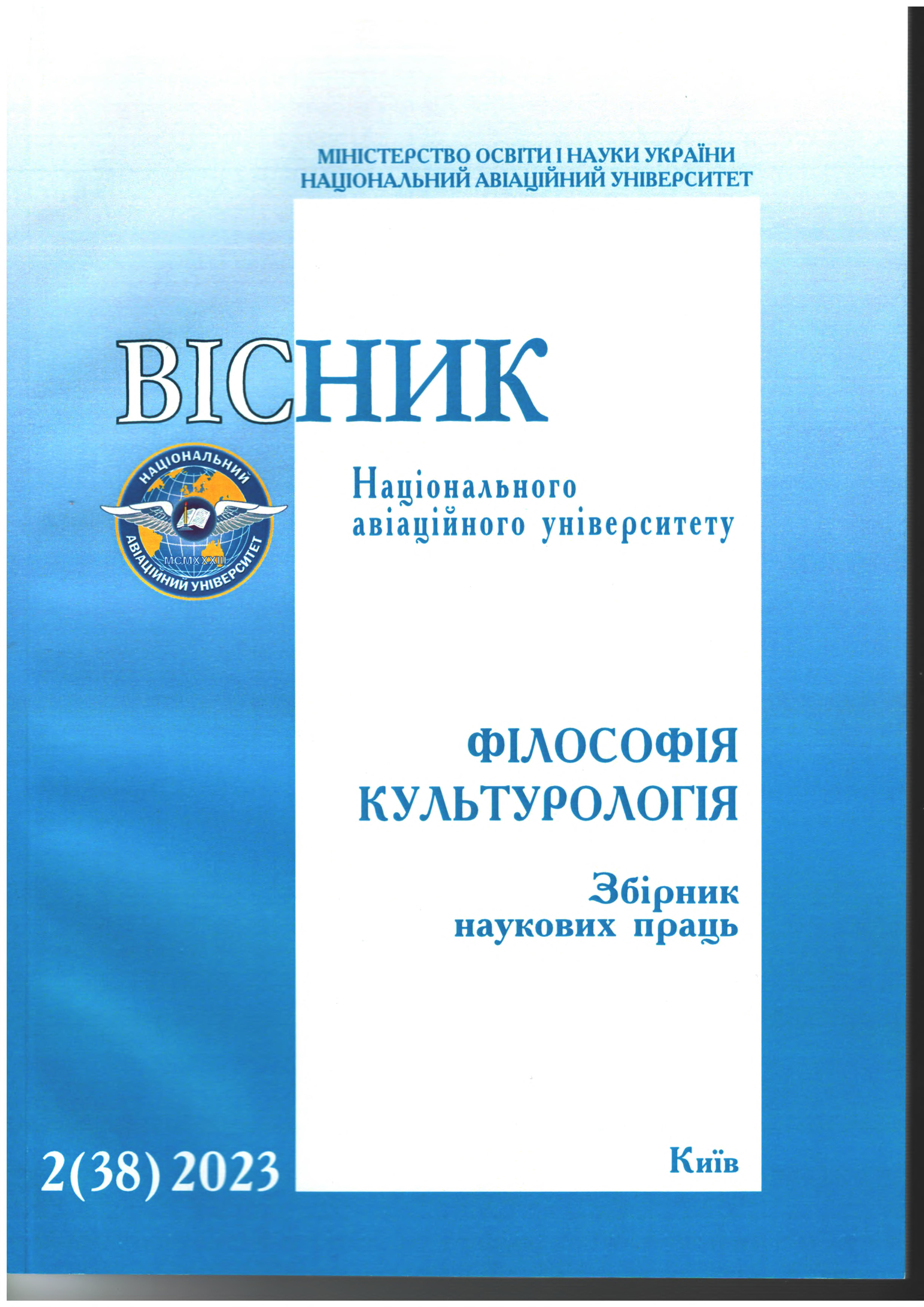A VISUAL COMMUNICATION AS AN ATTRIBUTE OF DIGITAL CULTURE
DOI:
https://doi.org/10.18372/2412-2157.2.18115Keywords:
informatization, digitalization, information society, visual communication, smiley, multimediaAbstract
Introduction. Digital culture leads to a change in emphasis from substantive supervision, which prompts the search for new and
transformation of existing ways of presenting information, primarily studying the communicative potential of virtual means of
communication. The aim and tasks. The aim of the article is the study of sociocultural characteristics of visual communication in the
conditions of digitalization. Research methods. The most adequate methodological tools are the sociocultural approach, the
comparative method, the hermeneutic procedures of interpretation and understanding, and the method of cultural-semantic analysis. Research results. It has been proven that the prerequisite for building an optimal model of communicative interaction is the visualization of information content that corresponds to the trends of digital culture, and provides an integral interaction of the virtual and the physical. Discussion. The analysis of communicative characteristics of the modern cultural age in the context of digitalization complements the conceptual achievements of theoreticians in formalized issues. This analysis aims to identify the potential of visual means of communication in the current circumstances. Conclusions. The phenomenon of non-verbal communicative interaction in the conditions of digital culture has an ambivalent character: on the one hand, it is a means of adaptation to the sociocultural reality of today, and on the other hand, it serves as a system-forming factor for cultural phenomena of the digital environment
References
Hattwig D., Bassert K., Medaille A., Burgess J. Libraries and the Academy. Visual Literacy Standarts in Higher Education:
an Opportunities for Libraries and Student Learning. Vol. 13, №. 1 (2013), Р. 61–89. DOI: https://doi.org/10.1353/pla.2013.0008
McLuhan M. Understanding Media: The extensions of man, London and New York. 2014. URL: https://designopendata. files.wordpress.com/2014/05/understanding-media-mcluhan.pdf
Антіпова О. П. Комунікативні характеристики сучасної культурної доби в контексті цифровизації. Вісник НАУ. 2021.
№ 2 (34). С. 95–98. (Серія «Філософія. Культурологія»). DOI: https://doi.org/10.18372/2412-2157.34.16336
Денисюк Ж. З. Візуальна комунікація як феномен масової культури. Вісник Національної академії керівних
кадрів культури і мистецтв. 2022. № 2. С. 9–14. DOI: https://doi.org/10.32461/2226-3209.2.2022.262194
Денисюк Ж. З., Яковлев О. В. Формування інформаційної культури суспільства в умовах цифровізації. Вісник Національної академії керівних кадрів культури і мистецтв. 2021. № 2. С. 18–22. DOI: https://doi.org/10.32461/2226-3209.2.2021.239802
Дротенко В. І. Феномен візуальності з погляду концепту єдності когнітивного та емоційного інтелекту. Scientific Goals and Purposes in XXI сentury. 2022. № 95. С. 478–484. Doi:10.51582/interconf.19-20.01.2022.049.
Дротянко Л. Г. Трансформація комунікативної функції мови в добу інформатизації. Вісник НАУ. 2012. № 2 (16). С. 5–10. (Серія «Філософія. Культурологія»).
Дротянко Л. Г. Цифровий вимір сучасного етапу цивілізаційного розвитку соціуму. Вісник Національного авіаційного університету. 2021. Вип. 1 (33). С. 16–21. (Серія «Філософія. Культурологія»).
Ленем Р. Електронне слово: демократія, технологія та мистецтво ; [пер. з англ. А. Галушка]. Київ : Ніка-Центр, 2005. 376 с.
Удріс Н. С. Візуальна комунікація в умовах суспільних трансформацій: оновлення семантичного простору. Вісник Харківського національного університету імені В. Н. Каразіна. 2015. № 35. С. 60–66.
Федорова К. Г. Цифрова культура як візуальна практика. Перспективи. Соціально-політичний журнал. 2022. № 1. С. 109–114. DOI https://doi.org/10.24195/spj1561-1264.2022.1.15
Шинкаренко О. В. Етичні експлікації «візуального повороту» у сучасній культурі. Українські культурологічні студії. 2020. № 1 (6). С. 45–49. DOI: https://doi.org/10.17721/UCS.2020.1(6).10


